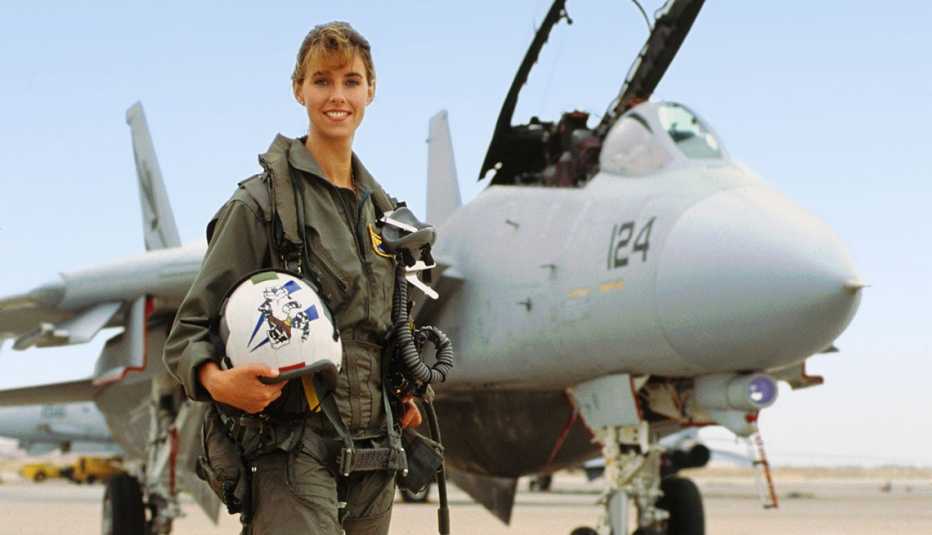Staying Fit
Former Navy lieutenant Carey Lohrenz, 53, always knew that she wanted to fly fighter jets. Her father was a Marine Corps pilot who greatly influenced her passion from an early age. But 30 years ago, when she began Aviation Officer Candidate School, women were banned from flying jets in combat.


AARP Membership— $12 for your first year when you sign up for Automatic Renewal
Get instant access to members-only products and hundreds of discounts, a free second membership, and a subscription to AARP the Magazine.
“I wanted to fly fighters because those pilots were the cream of the crop,” she says. “I thought to myself, Well, it takes about two years to get through this program. So maybe by the time I’m done, they will have lifted the law.”
In 1993, on the day her class was told to fill out their “dream sheet” by listing their top six assignment preferences, the Department of Defense ended the ban on women flying in combat.
“I was so stoked. When those assignments came out, based on my performance, I was assigned to fly the F-14 Tomcat,” Lohrenz says.
The F-14 had been popularized by the 1986 blockbuster film Top Gun.
“This airplane is challenging,” says Ward Carroll, a 15-year Tomcat radar intercept officer and popular YouTube host. “You’re traveling at supersonic air speeds. So, your adaptability in the airborne environment has to be 110 percent. Not everybody walking into the front door of flight school possesses that.”
The aircraft would begin its flight from zero to over 200 mph in just under two seconds by launching off an aircraft carrier deck via a catapult. The pilots would go to extremes, from conducting low-level flights at 500 mph to climbing to such high altitudes that, on some days, they could see the curvature of the earth.
History repeated
Carroll says that at the time Lohrenz was granted her assignment, she was entering a very “machismo” space where physical strength and the ability to sharply land an aircraft was seen as something that only men could do.


































































More on Home and Family
How a Former Marine Continues to Serve
Thomas Brennan sees journalism as another way to protect democracyRetired Military Dog Reunites With Soldier
Mission K9 Rescue has saved over 1,100 dogsTuskegee Airman Gets Recognition After 74 Years
Inaugural 'Top Gun' winner receives Wish of a Lifetime